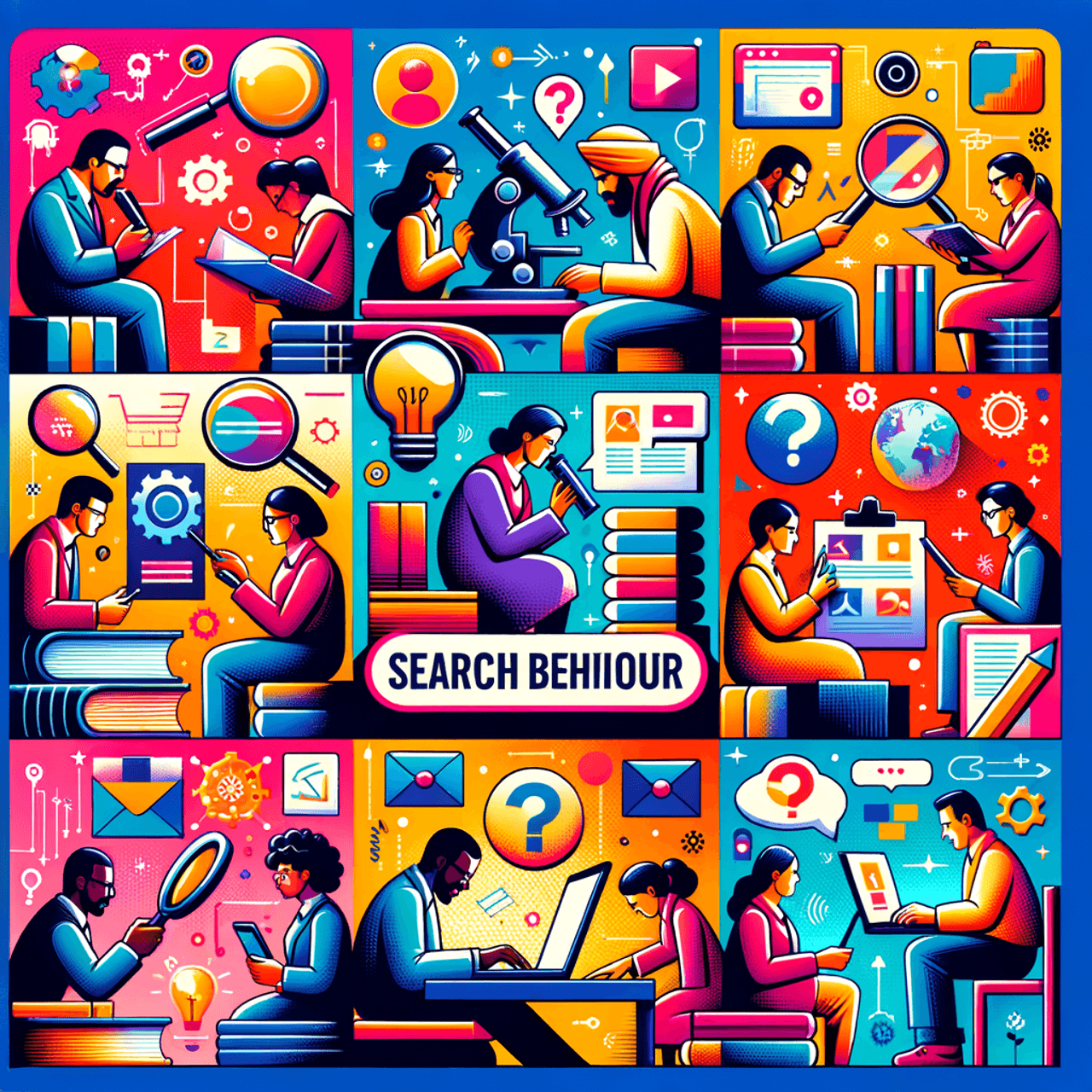by ContentERP | Oct 23, 2024 | Uncategorized
The 5 Best Niche Site Ideas Ranked by ContentERP
 Imagine standing at the edge of a vast ocean, each wave representing a different niche site idea. Some waves are massive and overwhelming—like broad topics where competition is fierce—while others are smaller, gentler, yet full of untapped potential. The key to building a successful niche site isn’t necessarily about diving into the largest waves, but rather about finding those quieter, more strategic spaces where you can make the most impact with the least resistance.
Imagine standing at the edge of a vast ocean, each wave representing a different niche site idea. Some waves are massive and overwhelming—like broad topics where competition is fierce—while others are smaller, gentler, yet full of untapped potential. The key to building a successful niche site isn’t necessarily about diving into the largest waves, but rather about finding those quieter, more strategic spaces where you can make the most impact with the least resistance.
In the digital landscape, profitable niches with low competition are the hidden gems every content creator seeks. But how do you find them? Enter ContentERP, a powerful content management system that does the heavy lifting when it comes to market research, keyword analysis, and content strategy, helping you uncover the best niche sites for building an audience and driving revenue.
In this article, we’ll explore the top 5 niche site ideas, ranked by ContentERP, and guide you on how to navigate these “fundamental niches” to achieve success. Whether you’re a seasoned content creator or just dipping your toes into the world of niche sites, this guide will illuminate the most promising opportunities.
Related: How To Find Niches Using Google Trends
1. Eco-Friendly Living: Sustainable Lifestyles for a Better Tomorrow
As the world becomes increasingly eco-conscious, the demand for sustainable living tips and products continues to soar. From zero-waste home guides to eco-friendly beauty products, this fundamental niche is gaining momentum as consumers seek greener, more ethical alternatives in their daily lives.
Why does ContentERP rank this niche so highly? Simple. While large corporations tackle the broad topics of climate change and environmental policy, smaller niche sites can thrive by focusing on specific sustainable living practices—like eco-friendly cleaning products, plastic-free kitchen swaps, or sustainable fashion.
With relatively low competition compared to broader environmental blogs, this niche offers substantial growth potential. People aren’t just searching for global solutions; they want personal, actionable steps they can incorporate into their routines. And that’s where niche sites come in, offering bite-sized, manageable changes with a big impact.
2. Home Office Setup: Curating the Perfect Remote Workspace
 Let’s face it—remote work is no longer a trend, it’s a fundamental shift in how people work. With millions of professionals now working from home, the demand for tips on creating the perfect home office has skyrocketed. From ergonomic chair reviews to standing desks and productivity tools, the home office setup niche has established itself as a profitable niche with surprisingly low competition.
Let’s face it—remote work is no longer a trend, it’s a fundamental shift in how people work. With millions of professionals now working from home, the demand for tips on creating the perfect home office has skyrocketed. From ergonomic chair reviews to standing desks and productivity tools, the home office setup niche has established itself as a profitable niche with surprisingly low competition.
Why does ContentERP favor this niche? It’s versatile. You can tap into product reviews, design inspiration, organizational tips, and even delve into mental health topics related to working from home. Whether it’s creating content about affordable home office essentials or luxurious workspace makeovers, there’s a wide range of opportunities to explore.
Moreover, the home office setup niche caters to various demographics—freelancers, entrepreneurs, remote employees—making it an evergreen topic that evolves alongside technology and work trends.
3. Pet Health and Wellness: Caring for Our Furry Friends
 The pet industry is booming, with pet owners consistently searching for the best ways to care for their furry companions. Yet within this massive industry, pet health and wellness stands out as one of the most profitable niches with low competition. This niche is particularly promising for content creators who want to combine their passion for animals with their content marketing strategy.
The pet industry is booming, with pet owners consistently searching for the best ways to care for their furry companions. Yet within this massive industry, pet health and wellness stands out as one of the most profitable niches with low competition. This niche is particularly promising for content creators who want to combine their passion for animals with their content marketing strategy.
Why is this niche a golden opportunity? Pet owners are devoted and loyal—they want the best for their pets, whether that means homemade organic dog food recipes or tips for managing pet anxiety. ContentERP highlights this niche because it offers multiple sub-niches within—like pet nutrition, holistic pet care, and even alternative treatments like acupuncture for pets.
Pet lovers are always seeking advice, and by providing accurate, helpful content, niche sites in this area can build a strong, engaged community. You can monetize through affiliate products, pet-related courses, or even partnerships with veterinarians or pet health brands.
Related: How To Find Niches Using Google Trends
4. DIY Home Improvement: Mastering the Art of Home Projects
 In recent years, there’s been a renaissance in DIY home improvement, driven in part by the global pandemic and the rise of homeownership. People are more interested than ever in rolling up their sleeves and tackling home projects, whether it’s building their own furniture, installing a backsplash, or repurposing vintage finds.
In recent years, there’s been a renaissance in DIY home improvement, driven in part by the global pandemic and the rise of homeownership. People are more interested than ever in rolling up their sleeves and tackling home projects, whether it’s building their own furniture, installing a backsplash, or repurposing vintage finds.
According to ContentERP, this niche ranks highly for its combination of high demand and relatively low competition in certain sub-niches, like DIY for small spaces or eco-friendly renovations. The beauty of DIY home improvement is its ability to attract a wide audience, from novice DIYers looking for easy projects to experienced handymen seeking advanced techniques.
The key to success in this niche is providing step-by-step guides, detailed product reviews, and videos that show how to complete a project. Not only does this keep your audience engaged, but it opens doors for affiliate marketing, sponsorships with home improvement brands, and even the potential for online courses or workshops.
5. Mindful Parenting: Raising Children with Intention
 Parenting is one of the most rewarding, yet challenging, roles a person can take on, and with the modern emphasis on mindfulness and well-being, mindful parenting has emerged as a unique, profitable niche. It combines the traditional parenting blog with elements of emotional intelligence, self-awareness, and mental health.
Parenting is one of the most rewarding, yet challenging, roles a person can take on, and with the modern emphasis on mindfulness and well-being, mindful parenting has emerged as a unique, profitable niche. It combines the traditional parenting blog with elements of emotional intelligence, self-awareness, and mental health.
So why is this niche on ContentERP’s radar? First, it speaks to a specific, highly motivated audience—parents who are actively seeking guidance on how to raise compassionate, self-aware children in a fast-paced world. Second, it offers a wealth of content opportunities, from tips on fostering emotional intelligence in toddlers to meditative techniques for stressed-out parents.
Because it’s still relatively new compared to traditional parenting niches, mindful parenting offers a chance to be at the forefront of an emerging market. Content creators can explore partnerships with children’s therapists, offer downloadable resources, or build online communities around the topic.
The Path to Success Is in the Niche
 At the heart of content creation lies a simple truth: your success depends on finding the right audience and serving their needs better than anyone else. Just as each wave in the ocean represents a different opportunity, niche sites offer countless ways to connect with readers, solve problems, and grow a sustainable business.
At the heart of content creation lies a simple truth: your success depends on finding the right audience and serving their needs better than anyone else. Just as each wave in the ocean represents a different opportunity, niche sites offer countless ways to connect with readers, solve problems, and grow a sustainable business.
Choosing the right niche is the first step in your journey, but what’s equally important is having the right tools to manage your content lifecycle. ContentERP simplifies the content lifecycle management process, giving you the insights and resources needed to identify profitable niches, create engaging content, and optimize for growth.
Are you ready to dive into the world of niche sites and make a lasting impact? Sign up for ContentERP today, and start building a profitable content strategy from the ground up. Remember, success lies not in tackling the biggest waves, but in mastering the quiet currents where opportunity awaits.
Because as they say, the best way to predict the future is to create it—one niche at a time.
Related: Scaling Your Content Strategy with Automated Publishing
by ContentERP | Oct 23, 2024 | Uncategorized
The Best Tool I Rely on to Manage My Content Creation Process from Start to Finish
 “What’s the hardest part about content creation?”
“What’s the hardest part about content creation?”
The question seemed simple enough, yet it lingered for a moment longer than expected. I glanced at my laptop where ideas had been sculpted into articles, blog posts, and social media campaigns for years. What was the hardest part? Was it the initial brainstorming phase when the screen is dauntingly blank? Or was it the final stages of optimizing content for search engines and social media? Perhaps, I thought, it was all of it—the entire content lifecycle can be a challenge.
“Honestly, the toughest part is managing it all—from start to finish.”
And that’s where ContentERP comes in. Like an orchestra conductor guiding a symphony, ContentERP has become the tool that leads me through each stage of content creation, ensuring that no note is missed. From ideation to publication and all the steps in between, this platform is the secret weapon I rely on to seamlessly manage the content lifecycle.
But what makes ContentERP indispensable? Let’s break down how this powerful tool simplifies each phase of the content creation process, and why it’s the best solution for anyone looking to manage their content lifecycle from start to finish.
Related: How to Publish High-Quality Content Without Missing Deadlines Using ContentERP
1. The Blank Page: From Ideation to Strategy
If content creation were a journey, the blank page would be the daunting mountain you have to climb. The ideation phase can feel like staring at the summit with no clear path. But this is where ContentERP becomes a lifeline.
With ContentERP’s brainstorming features, you don’t have to tackle the mountain alone. The platform allows you to create content strategies with ease, giving you access to advanced keyword research tools, audience insights, and competitive analysis. It’s like having a well-marked trail on your way to the top. By using ContentERP, you can identify what your audience wants and how to position your content to resonate with them.
Gone are the days of aimlessly throwing ideas at the wall to see what sticks. ContentERP provides data-driven insights that help you prioritize content ideas based on demand, competition, and SEO potential. This way, you’re not just creating content—you’re creating content that matters.
2. The Creative Process: Writing, Editing, and Refining
Once the idea is in place, the next challenge is writing and editing. As writers, we often think of content creation as a solitary process, but with ContentERP, you have a collaborative partner. The platform allows you to draft, edit, and revise content within its ecosystem, ensuring that you have a structured workflow.
ContentERP offers tools that are more than just spell-checkers or grammar assistants. Its built-in content editor provides real-time optimization suggestions—whether it’s for SEO keywords, readability, or formatting consistency. Think of it as having a personal editor who’s always available and never misses a detail. These optimization features ensure that your content not only flows beautifully but also ranks high on search engines, which is the ultimate goal.
As a result, writing becomes less of a struggle and more of a smooth, enjoyable process. You no longer have to worry about juggling between different tools to get the job done. Everything, from writing to editing, happens seamlessly within the platform.
3. Collaboration: Teamwork Made Simple
As the saying goes, it takes a village—and in content creation, teamwork is often crucial to success. Whether you’re working with a marketing team, editors, or designers, effective collaboration is key. With ContentERP, managing a content team becomes easier than ever.
The platform enables team members to collaborate in real time, making it easy to share drafts, leave comments, and make revisions without the back-and-forth of endless emails or scattered documents. It’s like having everyone in the same virtual room, working together to shape the content into its best form.
ContentERP’s version control ensures that you’re always working on the latest draft, and you can easily track who made which changes. For teams spread across different time zones or departments, this feature is a game-changer.
4. Optimization and SEO: A Must for Visibility
What good is great content if no one can find it? In today’s digital landscape, optimizing your content for search engines is as important as the writing itself. ContentERP helps manage this process by integrating SEO optimization tools directly into the content lifecycle.
From keyword recommendations to metadata management, ContentERP makes sure that every piece of content is ready to perform at its best in search engine rankings. It’s like having a personal SEO guru who ensures that every blog post or article not only reads well but is primed for visibility.
The platform also allows you to analyze SEO performance post-publication, giving you insights into what’s working and where there’s room for improvement. In this way, ContentERP keeps your content not only polished but also visible to the right audience.
Related: Top Tips for Publishing SEO-Optimized Content on Schedule
5. Publication and Distribution: The Grand Finale
The final leg of the content journey is publication and distribution. Here, ContentERP shines once again by allowing you to schedule content across multiple platforms from a single dashboard. Whether you’re managing a blog, social media channels, or newsletters, you can streamline your content distribution without having to hop between different tools.
Think of ContentERP as the stage manager who ensures that everything goes live exactly as planned. You can schedule posts, track engagement, and make real-time adjustments all from the same platform. This saves time, reduces errors, and ensures that your content reaches its intended audience at the right time.
6. Performance Tracking: Measuring Success
Once the content is out in the world, the job isn’t over. The final step in the content lifecycle is measuring performance—and ContentERP doesn’t leave you hanging here. With integrated analytics, you can track key metrics like page views, engagement rates, and conversions. This allows you to see which content is resonating with your audience and where improvements can be made.
ContentERP transforms raw data into actionable insights, helping you refine your content strategy moving forward. It’s like getting a report card that not only shows your grades but also offers feedback on how to improve.
The Secret to Seamless Content Lifecycle Management

From brainstorming and writing to publishing and analyzing, ContentERP is the best tool for handling every aspect of the content creation process. It’s more than just a platform—it’s a trusted partner that helps you navigate the complex journey from idea to publication.
And as the French philosopher Voltaire once said, “Perfect is the enemy of good.” With ContentERP, you don’t need perfection from the start. You just need the right tools to refine your process, optimize your work, and get it in front of your audience at the right time. The rest, as they say, will follow.
So, what’s your next step? Are you ready to manage your content lifecycle with ease and efficiency? Sign up for ContentERP today and take control of your content creation from start to finish.
Related: How ContentERP Helps Brands Innovate and Stay Ahead of Content Trends
by ContentERP | Oct 23, 2024 | Uncategorized
Market Research for Content Writers: A Simple Step-by-Step Guide for Beginners
 When I was a kid, I believed the best way to find out if ice cream was still in the freezer was to ask it directly. “Hey, ice cream, are you still there?” Of course, the silence from the freezer was deafening, but that never stopped me from checking. As funny as it sounds now, that childhood method of “research” wasn’t entirely useless—it was driven by curiosity, a desire for answers, and a need to verify a hunch. Fast forward to today, and while the stakes are higher than ice cream, the same principles of seeking information apply when it comes to market research for content writers.
When I was a kid, I believed the best way to find out if ice cream was still in the freezer was to ask it directly. “Hey, ice cream, are you still there?” Of course, the silence from the freezer was deafening, but that never stopped me from checking. As funny as it sounds now, that childhood method of “research” wasn’t entirely useless—it was driven by curiosity, a desire for answers, and a need to verify a hunch. Fast forward to today, and while the stakes are higher than ice cream, the same principles of seeking information apply when it comes to market research for content writers.
Just like my childhood quest for dessert, great content creation relies on finding the right information and verifying it through a process. But unlike talking to your freezer, market research is about gathering actionable insights to inform and sharpen your content strategy. Whether you’re crafting blog posts, social media content, or web copy, understanding your audience through market research is crucial to hitting the mark.
In this guide, we’ll take you through a simple, step-by-step process to demystify market research for content writers. Let’s dive in!
Related: The Future of Marketing: Content Creation for Social Media—Strategies That Work
Step 1: Understanding What Market Research Really Means
Market research might sound intimidating, but it’s essentially a fancy way of saying, “Let’s find out what our audience wants and needs.” It’s the process of gathering data to understand your target audience’s preferences, behaviors, and pain points. For content writers, this means understanding what topics resonate, what questions need answering, and how to craft content that meets those needs.
Imagine trying to write an article on fitness tips for seniors, but you don’t know what concerns seniors have about fitness. You could guess—but you’d be about as successful as my childhood self asking the freezer for a sign. Market research is what bridges the gap between guesswork and informed writing. It helps you tailor content so it not only grabs attention but also keeps readers coming back for more.
Step 2: Identifying the Types of Market Research
Before diving into the market research process, it’s essential to know there are two primary types of market research: primary research and secondary research.
-
Primary Research: This involves gathering first-hand data directly from your target audience. Think surveys, interviews, focus groups, or even conducting polls on social media. It’s like going out and asking people directly what their favorite ice cream flavor is.
-
Secondary Research: This is all about using existing data that others have already collected. You might browse through industry reports, competitor analysis, or data from search engine trends. It’s similar to checking an ice cream sales report to find out which flavor flies off the shelves fastest.
For content writers, both types of research are valuable. Primary research gives you unique insights directly from your audience, while secondary research can provide a broader industry perspective or validate your ideas.
Step 3: Define Your Target Audience
If market research were a road trip, your target audience would be the destination. Without knowing where you’re going, you’ll just wander aimlessly. To create compelling content, you need to know exactly who you’re writing for.
Start by creating audience personas—semi-fictional representations of your ideal readers. These personas should include details such as:
-
Demographics: Age, gender, occupation, location, income level, etc.
-
Behavioral traits: What are their interests? What websites do they visit? How do they consume content?
-
Pain points and challenges: What problems do they face, and how can your content help solve them?
For example, if you’re writing for small business owners looking to improve their online presence, your content might focus on SEO tips, website optimization, or digital marketing strategies. Knowing this in advance makes your writing more targeted and impactful.
Step 4: Conduct Keyword Research
In the realm of content creation, keywords are your bread and butter. Knowing what your audience is searching for allows you to write content that not only resonates with readers but also ranks well on search engines. The market research process here involves identifying the specific phrases and questions your audience is typing into Google.
Use tools like Google Keyword Planner, Ubersuggest, or Ahrefs to gather data on search volume, keyword difficulty, and related search terms. These insights will help you identify trending topics and areas where your content can fill gaps.
For example, if you discover that “best fitness tips for seniors” has a high search volume, you can tailor your article to include specific tips that address seniors’ fitness concerns—making your content both relevant and discoverable.
Related: Streamlining Blog Writing with ContentERP: A New Era of Effortless Content Creation
Step 5: Analyze Your Competitors
In the content world, your competitors can be your best teachers. What are they writing about? What type of content performs well for them? Analyzing your competitors’ content gives you a window into what works (and what doesn’t) in your industry.
Start by identifying your top competitors—those who rank for the keywords you’re targeting. Look at their content to answer questions like:
-
What topics are they covering?
-
How frequently are they posting?
-
What types of content (blog posts, videos, infographics) get the most engagement?
This analysis can help you identify gaps in their content strategy. Maybe your competitors haven’t addressed a specific pain point that your audience has. This is your opportunity to create unique content that fills that gap.
Step 6: Create Content That Speaks to Your Audience
With all the data you’ve gathered, it’s time to start writing. But don’t just regurgitate facts—craft content that tells a story, solves a problem, and engages your audience. Remember, market research isn’t just about finding information; it’s about turning that information into insights that shape your content strategy.
If your research shows that your audience prefers short, actionable tips, break your content into easy-to-digest sections with clear takeaways. If they enjoy in-depth analysis, don’t be afraid to dive deep into the subject matter.
In other words, let your market research inform the style, format, and tone of your content.
Step 7: Measure and Refine
 Just like ice cream preferences can change over time (chocolate lovers one year, vanilla fans the next), audience preferences evolve. That’s why it’s essential to regularly review the performance of your content and adjust your strategy accordingly.
Just like ice cream preferences can change over time (chocolate lovers one year, vanilla fans the next), audience preferences evolve. That’s why it’s essential to regularly review the performance of your content and adjust your strategy accordingly.
Use analytics tools like Google Analytics to track key metrics such as traffic, bounce rate, time spent on page, and conversions. This data will help you understand what resonates with your audience and what needs tweaking.
Remember, market research isn’t a one-time event. It’s an ongoing process that helps you stay relevant and responsive to your audience’s needs.
Conclusion: Always Be Curious
As I learned during my childhood quest for ice cream, asking the right questions can lead to delicious answers—or at least, answers that help you achieve your goals. In content creation, curiosity is your greatest ally. The more you understand your audience, the more effectively you can create content that not only informs but delights.
Related: How to Boost Traffic by Automating Your Content Flow: A Guide with a Twist
by ContentERP | Oct 23, 2024 | Uncategorized
How to Use Google Trends for Effective Insights
 Have you ever wished you could peek into the minds of millions of people around the world, discovering what they’re searching for at any given moment? Well, what if I told you that such a tool already exists, and it’s just a few clicks away? In the fast-paced world of digital content, knowing what’s trending can be the difference between flying high and fading into the background. Enter Google Trends—a free tool that gives you a window into the global hive mind, offering insights that can shape your content strategy, boost your SEO, and put you ahead of the competition.
Have you ever wished you could peek into the minds of millions of people around the world, discovering what they’re searching for at any given moment? Well, what if I told you that such a tool already exists, and it’s just a few clicks away? In the fast-paced world of digital content, knowing what’s trending can be the difference between flying high and fading into the background. Enter Google Trends—a free tool that gives you a window into the global hive mind, offering insights that can shape your content strategy, boost your SEO, and put you ahead of the competition.
But how exactly does one harness the full potential of Google Trends? And more importantly, how can you turn those insights into actionable strategies that grow your brand? This article will take you through the process, showing you how to use Google Trends to gather effective insights for content creation and SEO—insights that will resonate with your audience, drive traffic, and elevate your visibility online.
Related: The Best ContentERP Practices for Effective Keyword Research
What is Google Trends?
Before diving into how to use it effectively, let’s define Google Trends. Launched in 2006, Google Trends allows users to explore trending topics and keywords in real-time. By analyzing the popularity of search queries over time and across different regions, it gives you a clear picture of what people are searching for, when they’re searching for it, and how interest has evolved.
Imagine being able to forecast what your audience will care about next month, or discovering what topics are surging in popularity in your industry. Google Trends does exactly that, giving you the tools to make data-driven decisions about your content strategy.
Why Use Google Trends?
Every content creator or marketer knows that timing is everything. You could have the most engaging, well-written article, but if it’s not relevant to current conversations or trends, it could easily get lost in the vast ocean of online content. Google Trends allows you to tap into real-time data to ensure your content hits the right notes at the right time.
Want to know if your blog topic will attract attention? Or maybe you’re looking to launch a new product and want to gauge interest? Google Trends gives you the insights to confidently make these decisions. Think of it as a compass guiding your content strategy, ensuring you’re always in sync with your audience’s interests.
Step-by-Step Guide: Using Google Trends for Effective Insights
1. Identify Trending Topics
The most obvious and widely used feature of Google Trends is its ability to show trending topics. Whether you’re a seasoned content creator or a business looking to expand, finding topics that resonate with your audience is crucial.
How to Do It: Go to the Google Trends homepage and check out the “Trending Searches” section. This gives you an overview of the most popular search queries in real-time, globally or within specific regions. You can also filter by categories, such as business, health, or entertainment, to find trends relevant to your niche.
For instance, if you’re running a fitness blog, you could check the trends in “Health & Fitness” to see what workouts or diets are gaining traction. This not only helps you align your content with current interests but also provides a timely edge.
2. Refining Keyword Research
One of the most important aspects of SEO is keyword research, and Google Trends can significantly enhance this process. Instead of relying on static keyword tools, Google Trends offers dynamic, real-time insights, helping you identify not only the most searched terms but also seasonal fluctuations.
How to Do It: Type in a keyword relevant to your niche, and Google Trends will show how interest in that keyword has changed over time. You can even compare up to five keywords to see how they perform against each other.
For example, if you’re a fashion blogger wondering whether to write about “fall trends” or “winter fashion,” a simple comparison on Google Trends can show you which term is gaining more traction, allowing you to make a more informed choice.
3. Capitalizing on Seasonal Trends
 Certain topics spike in popularity depending on the time of year—think “holiday recipes” in December or “back-to-school shopping” in August. Google Trends enables you to capitalize on seasonal interest by showing how a keyword’s search volume changes throughout the year.
Certain topics spike in popularity depending on the time of year—think “holiday recipes” in December or “back-to-school shopping” in August. Google Trends enables you to capitalize on seasonal interest by showing how a keyword’s search volume changes throughout the year.
How to Do It: Search for a specific keyword, then scroll down to the “Interest Over Time” graph. This feature reveals seasonal spikes, showing you the best time to publish content related to that keyword.
By timing your content to align with seasonal interest, you increase the chances of it getting discovered and shared, keeping your brand top-of-mind when your audience is most engaged.
4. Location-Based Insights for Local SEO
If your business operates in a specific region, Google Trends can help you localize your content. Whether you’re a brick-and-mortar store or a local service provider, knowing what people are searching for in your area can give you a competitive advantage.
How to Do It: Enter your keyword and scroll to the “Interest by Region” section. Here, you’ll see how popular your keyword is across different locations. You can use this information to tailor your content to the specific interests of your local audience.
For instance, if you’re a real estate agent, you might notice that searches for “luxury apartments” are trending in a particular city. You can then optimize your content to target potential buyers in that region, improving your local SEO and driving relevant traffic.
5. Using Related Queries for Content Ideas
Running out of fresh content ideas? Google Trends’ related queries feature is like a treasure chest of inspiration. When you search for a keyword, the platform shows a list of related queries—topics or keywords that are gaining popularity and are relevant to your initial search.
How to Do It: After entering your keyword, scroll to the “Related Queries” section. This will display terms that are currently trending alongside your keyword, giving you fresh ideas to expand your content strategy.
For example, if you’re writing about “plant-based diets,” related queries might include “vegan protein sources” or “plant-based meal prep,” giving you new angles to explore and ensuring your content stays relevant.
Conclusion: A Content Strategy Powered by Data
 As the fisherman carefully reads the tides before casting his net, so too must content creators read the trends before creating content. Google Trends offers a powerful way to ensure your content is not only timely but also effective, giving you real-time insights into what your audience cares about most. Whether you’re identifying trending topics, refining your keyword strategy, or tapping into local SEO opportunities, Google Trends is an indispensable tool for content optimization.
As the fisherman carefully reads the tides before casting his net, so too must content creators read the trends before creating content. Google Trends offers a powerful way to ensure your content is not only timely but also effective, giving you real-time insights into what your audience cares about most. Whether you’re identifying trending topics, refining your keyword strategy, or tapping into local SEO opportunities, Google Trends is an indispensable tool for content optimization.
Imagine the competitive edge you’ll gain by consistently staying one step ahead, creating content that resonates because it’s backed by data. The world of online content is vast and ever-changing, but with ContentERP and Google Trends by your side, navigating these waters becomes infinitely easier.
As the Chinese proverb goes, “To know the road ahead, ask those coming back.” Google Trends is your guide, offering insight into the paths already traveled by millions of searchers. So, are you ready to craft data-driven content that speaks directly to your audience’s needs? Let ContentERP help you turn insights into action—sign up today and unlock the full potential of content optimization.
Related: How to Stay Productive on the Go with Mobile Content Tools
by ContentERP | Oct 23, 2024 | Uncategorized
The Dynamics of Search Behavior: Unveiling Patterns and Trends
Have you ever paused to wonder what the world is searching for at this very moment? Perhaps right now, thousands of people are typing “how to bake sourdough bread” into Google, while others frantically search for “top travel destinations for 2024.” What we search for says a lot about us—our desires, our fears, our curiosity. But these searches are not random; they form patterns that can be tracked, studied, and—if you’re smart—capitalized on.
In the digital age, search behavior isn’t just about finding answers. It’s about understanding the ebb and flow of human interest, identifying what’s trending, and using that knowledge to craft content that resonates with audiences. But how do we unveil these hidden patterns and trends? Enter tools like Google Trends, which offers a real-time window into what’s capturing the world’s attention at any given moment.
In this article, we’ll explore the dynamics of search behavior, unveiling the patterns and trends that define what people are searching for and how businesses can leverage this information. We’ll break down how to use tools like Google Trends, why understanding trending searches matters, and how these insights can shape your content strategy. By the end, you’ll be ready to not only observe search trends but to harness them for your own content creation needs.
Related: The Best Tools for Managing Your Content Calendar
The Anatomy of Search: Why We Search
 Before diving into the specifics of search trends, it’s important to understand why people search in the first place. Think of it as the human instinct for discovery in the modern world. The act of searching, at its core, is a reflection of our desire to learn, solve, and explore. But our searches aren’t static. They evolve with the times—shaped by cultural events, global crises, holidays, and viral moments.
Before diving into the specifics of search trends, it’s important to understand why people search in the first place. Think of it as the human instinct for discovery in the modern world. The act of searching, at its core, is a reflection of our desire to learn, solve, and explore. But our searches aren’t static. They evolve with the times—shaped by cultural events, global crises, holidays, and viral moments.
Consider how quickly the world turned to search engines during the early days of the COVID-19 pandemic. Terms like “symptoms of COVID-19,” “face masks,” and “quarantine activities” dominated the search landscape, offering a real-time glimpse into the collective concerns of society. Similarly, searches for seasonal topics—“Super Bowl snacks” or “Christmas gift ideas”—reveal the cyclical nature of how we seek information.
In essence, search behavior mirrors human behavior. It changes with the seasons, it shifts with global events, and it responds to trends as they rise and fall. For content creators, understanding these dynamics is the key to staying relevant.
Tools of the Trade: How to Use Google Trends
If search behavior is a treasure map, then Google Trends is the compass that helps you navigate it. This tool provides invaluable insights into what people are searching for in real time. But how exactly do you use it to your advantage?
First, go to Google Trends and start by typing in a topic or keyword. Let’s say you’re a content creator interested in writing about fitness. Type in “home workouts” and Google Trends will show you the search volume over time, related queries, and even geographic data on where the search is most popular. This allows you to see whether interest is rising, falling, or holding steady.
Google Trends also shows trending searches today, which gives you a snapshot of the hottest topics. Imagine riding a wave just as it begins to crest—that’s the power of real-time search data. If you’re a content creator, this tool allows you to create blog posts, articles, or videos on topics that are already gaining momentum.
Additionally, you can compare keywords to see which ones are more popular, helping you refine your content strategy. For instance, you might discover that “high-intensity interval training” is trending more than “yoga for beginners,” and you can adjust your content accordingly.
The beauty of Google Trends lies in its simplicity—it’s a tool that democratizes data, giving you the same insights that big brands and media companies rely on. Whether you’re looking to discover top Google searches today or track niche topics, this tool provides a clear path to relevance.
Unveiling Patterns: From Search to Strategy
So, you’ve identified a trending topic—now what? The key is transforming these insights into actionable content. Understanding search behavior is like having a conversation with your audience before they even speak. It’s about anticipating their needs, questions, and curiosities, and crafting content that meets them at the right time.
For example, let’s say you run a blog focused on wellness. You notice that searches for “immune-boosting foods” spike during the winter months. Armed with this knowledge, you can prepare a series of articles, recipes, or guides on the topic before the search volume hits its peak, ensuring that your content is ready to meet the demand.
Similarly, seasonal searches—whether for holidays, sports events, or annual trends—offer an opportunity to create content that aligns with what people are already looking for. Think about it like surfing: you want to catch the wave of interest just as it’s rising, not after it’s already crashed.
But search trends aren’t limited to obvious seasonal patterns. Viral moments, celebrity news, and global events can all create unexpected spikes in search behavior. As a content creator, agility is your best friend. When you spot a trend, acting quickly allows you to ride the wave and position yourself as a go-to source of information.
Using Search Behavior to Enhance Content Creation
Now that you’ve unlocked the power of search behavior, how do you ensure that your content is primed for success? Start by focusing on high-intent keywords. These are the phrases people use when they’re looking for specific solutions or answers. For example, instead of just targeting “workout tips,” you might target “best home workout for beginners.”
Another way to enhance your content is by focusing on the context of searches. For instance, searches for “best travel destinations” might spike during vacation planning seasons, but pairing that with related terms like “affordable travel” or “solo travel tips” can help you stand out.
The key is always to listen to what your audience is asking. Just like a good conversation, content creation based on search behavior should be responsive, timely, and tuned into the pulse of your audience’s needs.
The Search for Connection
 The dynamics of search behavior are, at their core, a reflection of humanity’s ongoing quest for knowledge, connection, and solutions. Every query typed into a search engine represents a need—a desire to learn, explore, or find answers. And as content creators, our job is to meet those needs in meaningful ways.
The dynamics of search behavior are, at their core, a reflection of humanity’s ongoing quest for knowledge, connection, and solutions. Every query typed into a search engine represents a need—a desire to learn, explore, or find answers. And as content creators, our job is to meet those needs in meaningful ways.
Imagine this: every search is a whispered question from the world, and with the right tools—like Google Trends—you can respond with insight and relevance. You don’t have to be a mind reader; you just need to pay attention to the patterns unfolding in front of you.
So, are you ready to create content that speaks directly to what people are searching for? Sign up for ContentERP today, and let us help you turn search insights into content that connects, engages, and resonates. After all, if a search is a question, is there any greater power than being the answer?
Related: How to Use ContentERP to Boost Team Efficiency
by ContentERP | Oct 23, 2024 | Uncategorized
Understanding B2B Content Writing: A Comprehensive Guide
1. What is B2B Content Writing?
B2B content writing is the creation of informative and persuasive content specifically tailored for businesses selling products or services to other businesses. Unlike B2C content writing, which targets individual consumers, B2B content writing focuses on addressing the needs, challenges, and goals of businesses, often requiring a more technical and in-depth approach to showcase expertise and build trust. B2B content plays a crucial role in the marketing funnel by educating potential clients, nurturing leads, an
2. Essential Skills for B2B Content Writers
To excel in B2B content writing, industry knowledge and research skills are crucial, as writers must stay up-to-date with the latest trends, technologies, and challenges in their clients’ industries. Understanding complex topics and simplifying them is another essential skill, allowing writers to break down intricate concepts into easily digestible content for their target audience. The ability to write for different formats and platforms is vital, as B2B content writers must adapt their writing style and structure to suit various me
3. B2B Content Writing Examples
B2B content writing encompasses various formats, each serving specific purposes in the marketing funnel. White papers and case studies are in-depth, research-based documents that showcase a company’s expertise and provide detailed solutions to industry problems, often used to generate leads and build credibility. Technical blog posts and articles offer valuable insights, industry trends, and how-to guides, helping to establish thought leadership and drive organic traffic through SEO optimization. Email marketing campaigns in B2B focus on nurturing
4. Popular B2B Writing Niches
Popular B2B Writing Niches:
1. Software and technology: This niche involves writing about complex software solutions, cloud computing, cybersecurity, and emerging technologies like AI and IoT. Writers in this field must stay up-to-date with rapidly evolving trends and be able to explain technical concepts to both IT professionals and business decision-makers.
2. Finance and fintech: B2B content in this niche covers topics such as banking solutions, payment processing
5. Best Practices for Effective B2B Content Writing
To create effective B2B content, writers must first thoroughly understand their target audience and identify their specific pain points, allowing them to tailor content that directly addresses these challenges. Rather than focusing solely on product features, successful B2B content emphasizes the benefits and solutions offered, demonstrating how the product or service can solve real-world problems and add value to the customer’s business. Incorporating relevant data, statistics, and case studies lends credibility to the content and provides concrete evidence of
Conclusion
 Imagine standing at the edge of a vast ocean, each wave representing a different niche site idea. Some waves are massive and overwhelming—like broad topics where competition is fierce—while others are smaller, gentler, yet full of untapped potential. The key to building a successful niche site isn’t necessarily about diving into the largest waves, but rather about finding those quieter, more strategic spaces where you can make the most impact with the least resistance.
Imagine standing at the edge of a vast ocean, each wave representing a different niche site idea. Some waves are massive and overwhelming—like broad topics where competition is fierce—while others are smaller, gentler, yet full of untapped potential. The key to building a successful niche site isn’t necessarily about diving into the largest waves, but rather about finding those quieter, more strategic spaces where you can make the most impact with the least resistance. Let’s face it—remote work is no longer a trend, it’s a fundamental shift in how people work. With millions of professionals now working from home, the demand for tips on creating the perfect home office has skyrocketed. From ergonomic chair reviews to standing desks and productivity tools, the home office setup niche has established itself as a profitable niche with surprisingly low competition.
Let’s face it—remote work is no longer a trend, it’s a fundamental shift in how people work. With millions of professionals now working from home, the demand for tips on creating the perfect home office has skyrocketed. From ergonomic chair reviews to standing desks and productivity tools, the home office setup niche has established itself as a profitable niche with surprisingly low competition. The pet industry is booming, with pet owners consistently searching for the best ways to care for their furry companions. Yet within this massive industry, pet health and wellness stands out as one of the most profitable niches with low competition. This niche is particularly promising for content creators who want to combine their passion for animals with their content marketing strategy.
The pet industry is booming, with pet owners consistently searching for the best ways to care for their furry companions. Yet within this massive industry, pet health and wellness stands out as one of the most profitable niches with low competition. This niche is particularly promising for content creators who want to combine their passion for animals with their content marketing strategy. In recent years, there’s been a renaissance in DIY home improvement, driven in part by the global pandemic and the rise of homeownership. People are more interested than ever in rolling up their sleeves and tackling home projects, whether it’s building their own furniture, installing a backsplash, or repurposing vintage finds.
In recent years, there’s been a renaissance in DIY home improvement, driven in part by the global pandemic and the rise of homeownership. People are more interested than ever in rolling up their sleeves and tackling home projects, whether it’s building their own furniture, installing a backsplash, or repurposing vintage finds. Parenting is one of the most rewarding, yet challenging, roles a person can take on, and with the modern emphasis on mindfulness and well-being, mindful parenting has emerged as a unique, profitable niche. It combines the traditional parenting blog with elements of emotional intelligence, self-awareness, and mental health.
Parenting is one of the most rewarding, yet challenging, roles a person can take on, and with the modern emphasis on mindfulness and well-being, mindful parenting has emerged as a unique, profitable niche. It combines the traditional parenting blog with elements of emotional intelligence, self-awareness, and mental health.At the heart of content creation lies a simple truth: your success depends on finding the right audience and serving their needs better than anyone else. Just as each wave in the ocean represents a different opportunity, niche sites offer countless ways to connect with readers, solve problems, and grow a sustainable business.
